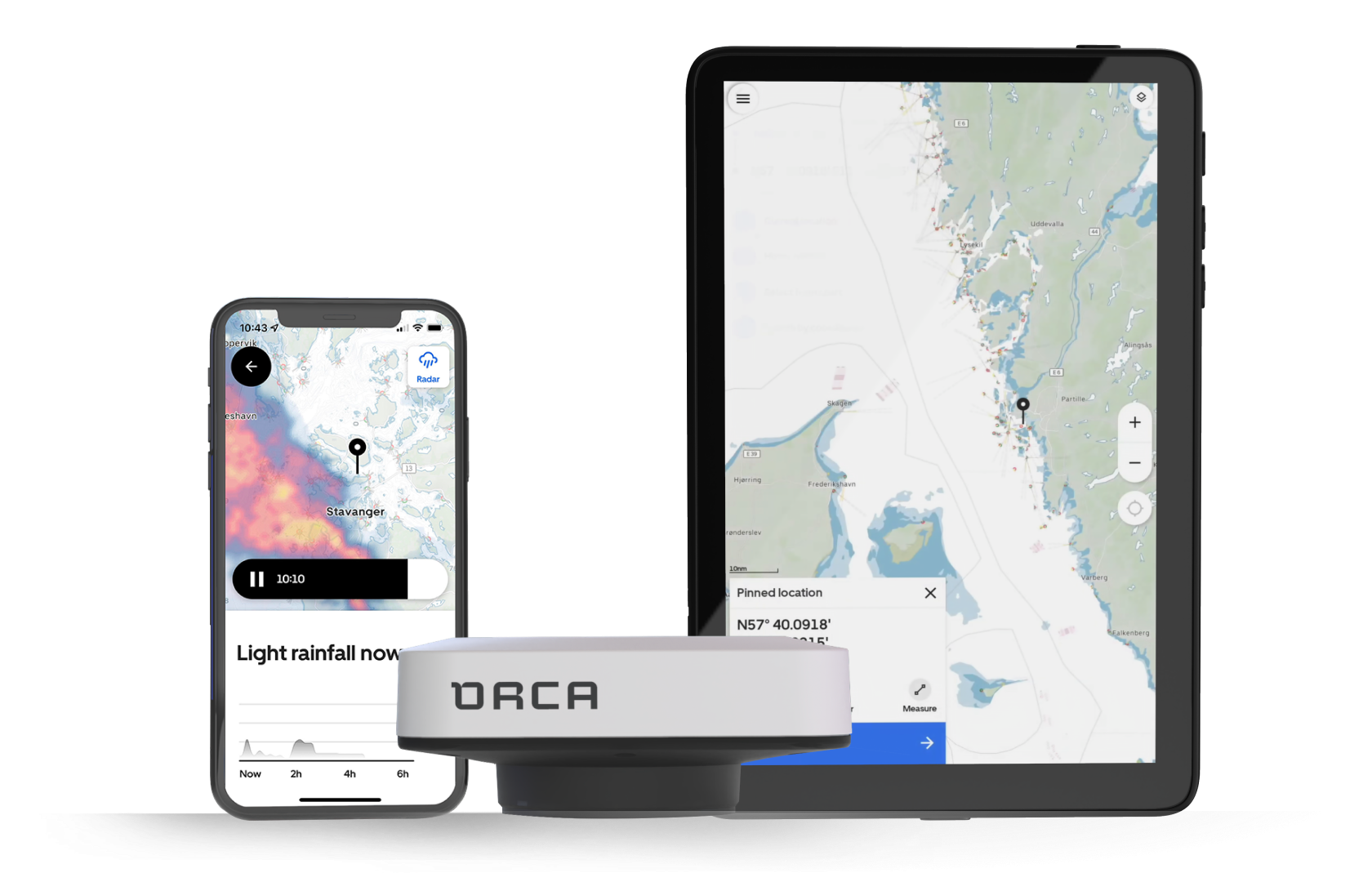All Articles
The Orca Sailing Processor
May 19, 2023 • 7 min read
Take your sailing to the next level with the Orca Sailing Processor.
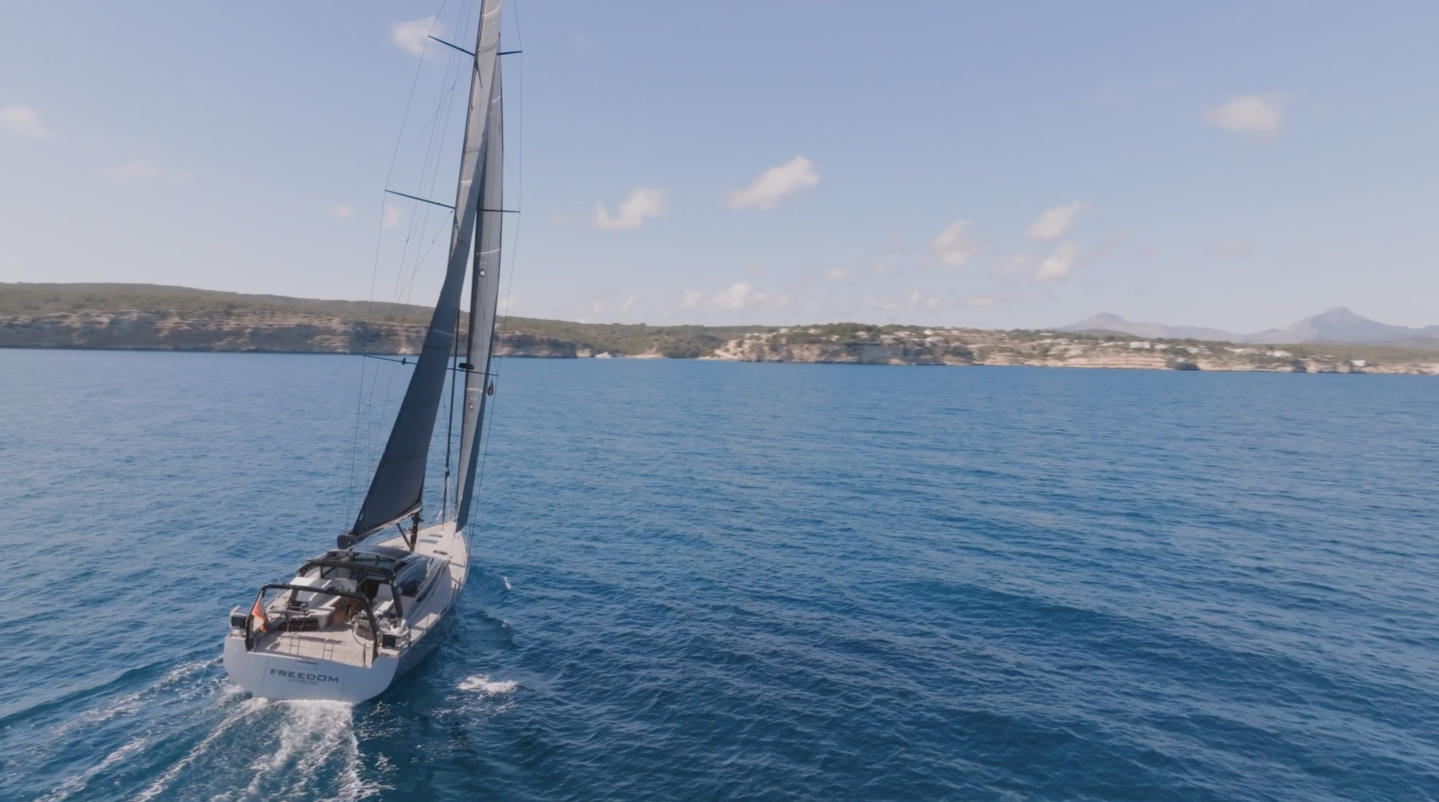
Sailing is a fantastic activity. It is a blend of science, intuition, experience, and teamwork – and if you want to sail well, you’ll have to master all of them.
In the realm of sailing science, the most important information sailors care about are True Wind Speed and True Wind Direction. Knowing True Wind, you can keep track of wind shifts, derive laylines, and measure your sailing performance against your Polar Diagram. It may sound trivial to calculate True Wind accurately, but it is a complex process that involves a lot of math and fine-tuned calculations.
To calculate True Wind accurately, you need a Sailing Processor. Traditionally, Sailing Processors have been expensive and complicated tools that are aimed at professionals and the most technology-oriented sailing enthusiasts. With Orca, we work to democratize high-end sailing experiences – and the Orca Sailing Processor is a perfect example of that.
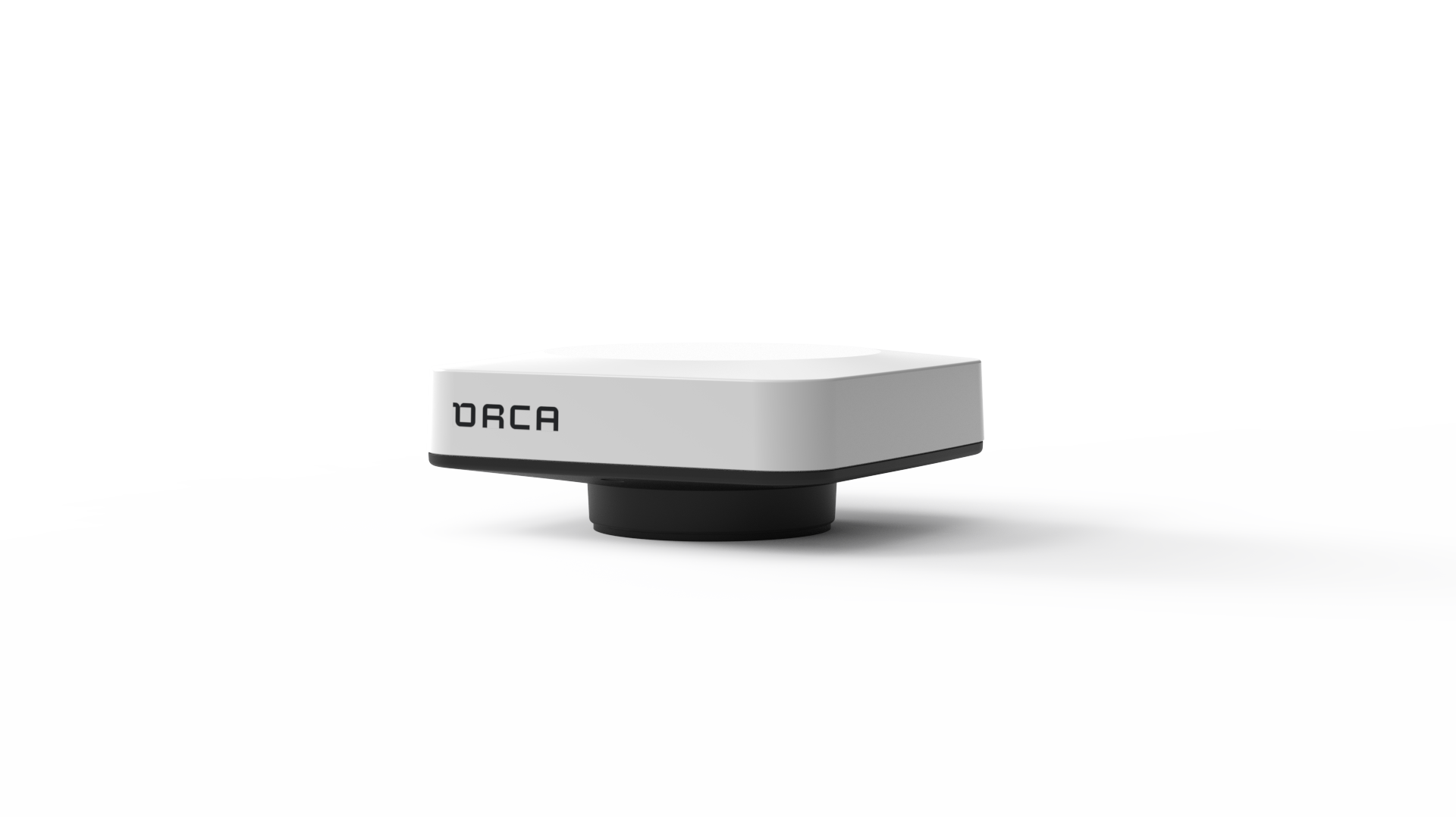
The Orca Sailing Processor is powered by the versatile Orca Core.
This article covers the science of measuring wind and how Orca’s Sailing Processor that runs inside the Orca Core helps you sail faster, and get an edge in races – without complex calibrations and data input.
The tree wind reference systems
In Orca, you can set up your sailing instruments with three different reference systems:
Measured Wind
Apparent Wind
True Wind
Measured Wind
Measured Wind is the wind as directly measured by your wind sensor. Because your wind sensor is affected by many physical effects that make it inaccurate, Measured Wind is in itself an inaccurate value and should generally not be used when sailing.
Keeping track of Measured Wind can be useful to understand how much calibration and computation Orca is applying to your sailing instruments.
Apparent Wind
Apparent Wind is the wind as observed by your sails. To derive the Apparent Wind, Orca applies computation and calibration offsets to the Measured Wind.
Apparent Wind is commonly used as the source of truth for sail trim.
True Wind
True Wind is referenced against the water surface. To derive True Wind, Orca applies computation and calibration offsets and then calculates the wind as if your boat wasn’t moving.
Because True Wind is referenced against the water surface, it is a value that helps you understand how the wind is changing irrespective of your boat’s speed and direction. True Wind lets you understand systematic changes to the wind and is also used to benchmark your boat speed against your Polar Diagram.
Accurate True Wind measurements are often referred to as «the holy grail» of sailing metrics, and they make it easier to sail faster and make better tactical decisions.
Your Wind Sensor is wrong, but Orca can fix that
Measured Wind is the wind that your wind sensor experiences. It is affected by several physical phenomena, which in turn makes it unrepresentative of the wind that your sails are experiencing. On top of this, your Speed Against Water sensor, which is used to calculate True Wind, can also be unreliable.
To get accurate wind information, you'll need a sailing processor that compensates for the effect of these phenomena:
Upwash
Heeling and wave-induced mast motion
Downwind Acceleration
Wind Gradient
Leeway
Non-linear Speed Through Water sensor
Upwash
Upwash is a phenomenon that primarily occurs when sailing upwind.
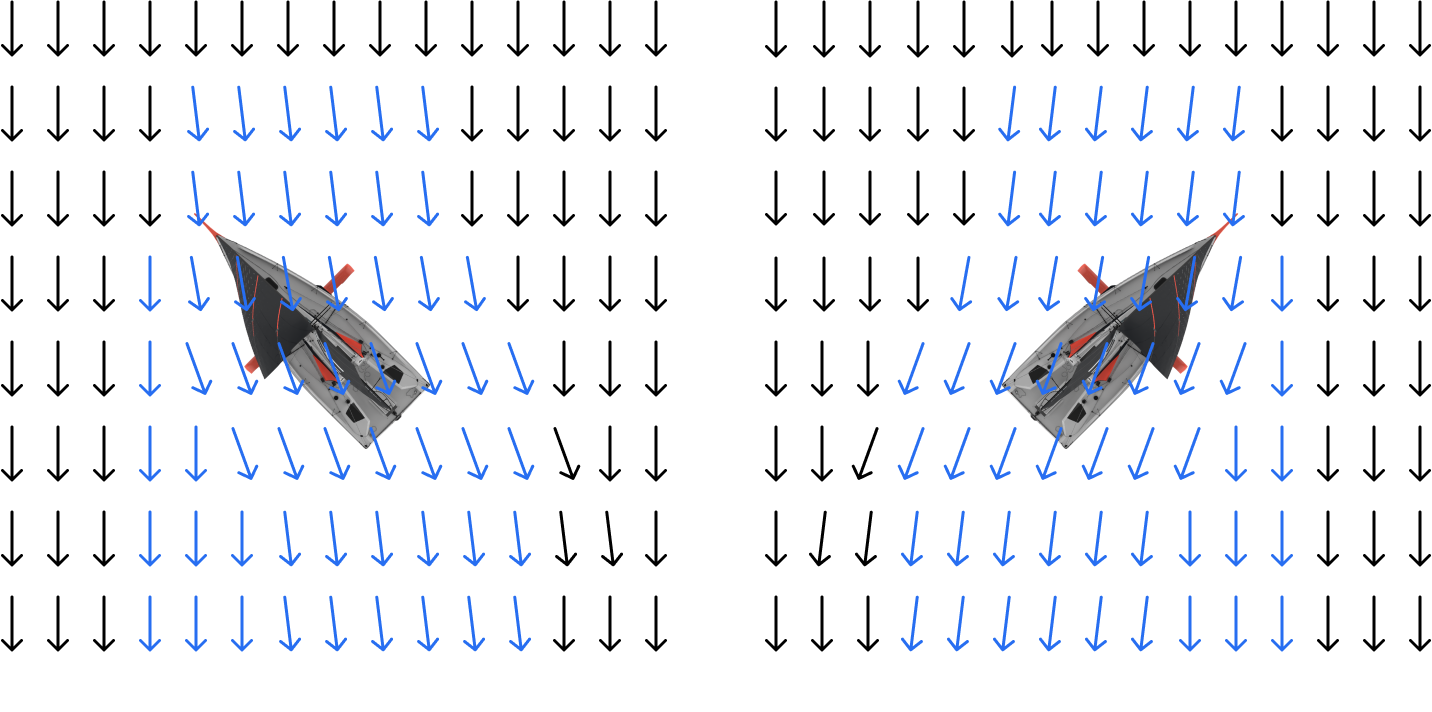
Upwash – illustrated by the blue lines – is a shift in wind direction caused by your sails. This illustration greatly exaggerates the effect.
Low pressure induced on the leeward side of your sails will twist the wind flow towards the angle of your sail, which also affects your Measured Wind.
The effect of Upwash is often called True Wind Direction Tacking, where you’ll observe a different True Wind Direction depending on which tack you are sailing on. The magnitude of this effect depends on the wind speed, wind direction, and the position of your wind sensor relative to your sails. A non-elevated wind sensor will typically see a 6-10 degree difference in True Wind Direction between tacks, which makes keeping track of wind shifts very difficult.
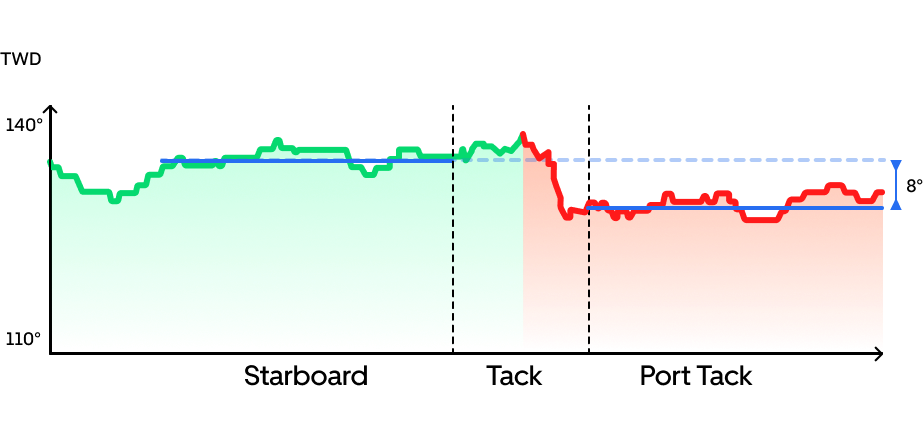
True Wind Direction Tacking will cause a different True Wind Direction on each tack. In the graph above, the difference between the two tacks is 8°.
Orca lets you compensate for True Wind Direction Tacking. After running TWD calibration with Orca’s Sailing Processor, True Wind Direction will be stable across both tacks – which gives you reliable and accurate insight into wind shifts during upwind sailing.
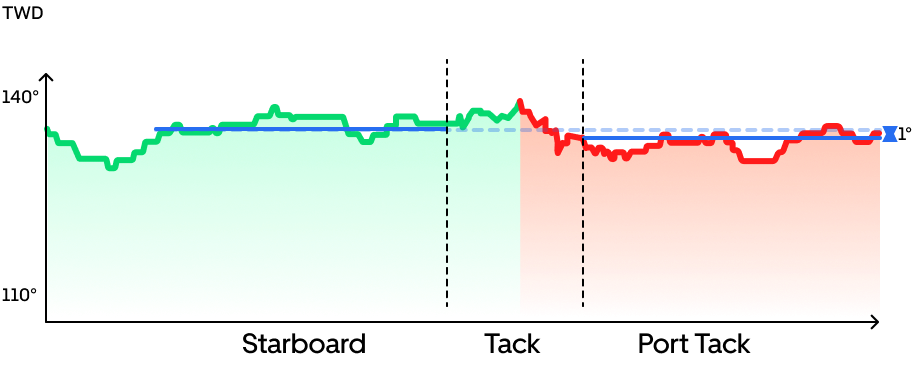
With calibration in Orca, the effect of True Wind Direction Tacking is negated, and True Wind Direction is stable across both tacks.
Heeling and wave-induced mast motion
When your boat heels, your wind sensor’s pivot point becomes tilted.
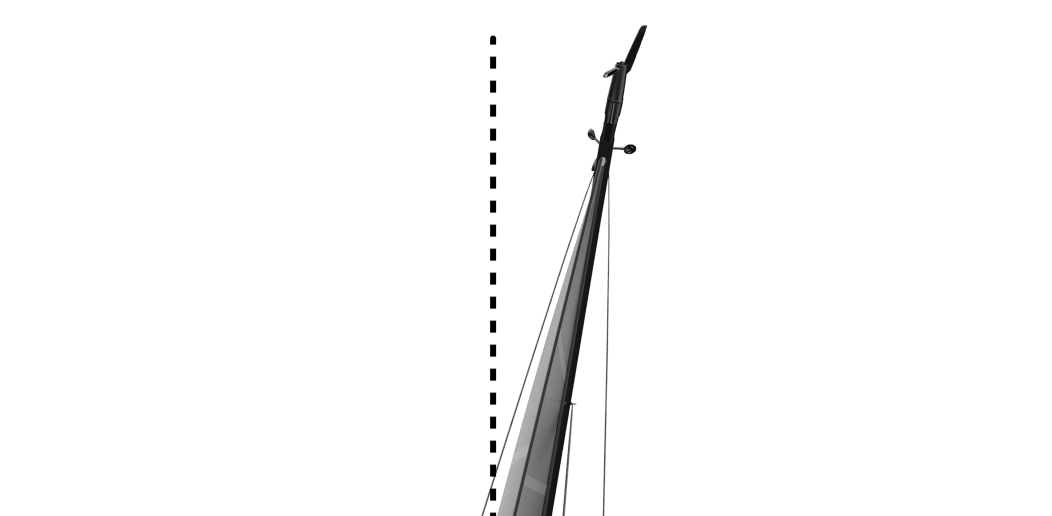
Heeling and mast motion affects measured wind speed and direction.
The tilt makes your wind sensor under-report the actual wind speed. In addition, the wind angle it reads will not be referenced against the flat water surface but against the mast’s orientation. Orca’s Sailing Processor automatically compensates for this by correcting the Measured Wind for your heel angle.
Wave-induced mast motion occurs when sailing downwind in light winds and rolling waves. As your boat rolls, the Wind Sensor at the top of your mast will sway back and forth, which in turn will induce Measured Wind. Orca automatically estimates the induced Measured Wind and compensates for it.
Downwind acceleration
When going downwind, low pressure on the leeward side of your sail will accelerate the wind around the edges of the sail.
This acceleration will in turn influence your Measured Wind, giving you higher wind speed measurements than what your sail is actually experiencing. Orca currently uses a standard compensation formula for non-elevated wind sensors, and will soon let you set up custom calibration to compensate for downwind acceleration.
Wind Gradient
The Wind Gradient is the difference in wind speed from the top of your mast to the bottom of your sail. It is caused by the temperature difference between the water’s surface and the air temperature, and it is present at low wind speeds, typically at 3 m/s and lower. The Wind Gradient is stronger when the difference in water temperature and air temperature is large in combination with low wind speeds.

At low wind speeds, the Wind Gradient will cause your wind sensor to report higher wind speeds than what your sail is experiencing.
The Wind Gradient makes Measured Wind Speed higher than what your sail observes. Orca calculates a standard gradient compensation based on the height of your mast to offset the Wind Gradient. Orca also shifts your True Wind Speed to a reference altitude of 10 meters, which is the reference altitude used for wind speed in Polar Diagrams – making your polar performance targets much more accurate at lower wind speeds.
Leeway
Leeway is the difference in angle between your boat’s heading and its course over water. A low value means that your boat will have little sideway drift when sailing upwind, while a high value means your boat will have a stronger sideways drift.
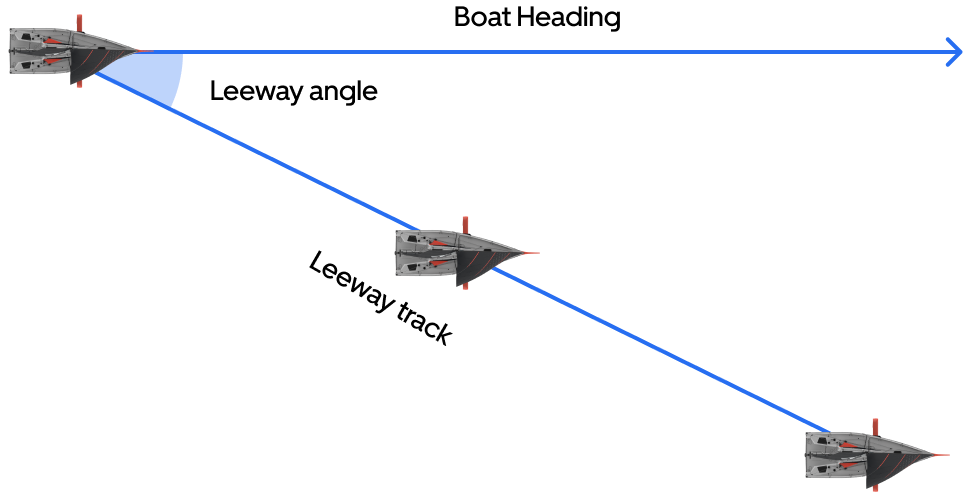
Leeway is the difference between your boat's heading and its course over water.
Leeway is a function of heel and Speed Through Water. Orca automatically estimates a leeway coefficient from your Polar Diagram and corrects your True Wind values for Leeway.
Non-linear Speed Through Water sensor
The traditional Speed Through Water sensor is a paddle-wheel sensor. Paddle-wheel sensors typically under-report at lower speeds and over-report at very high speeds. The boundary layer and turbulence along your boat’s hull create this effect.
Modern paddle-wheel sensors, such as Airmar’s DST800 smart transducers automatically compensate for some of these effects. Ultrasonic Speed Through Water sensors, such as Airmar’s UST800, offer far better accuracy than paddle-wheel sensors and are accurate even at very low speeds – so you should consider one if you are serious about sailing. Orca currently doesn’t support paddle wheel calibration but will do so in the near future.
Getting the best sailing metrics with Orca
A core principle at Orca is to make complex things easy and simple to use. The Orca Sailing Processor is a great example of this. While traditional sailing processors require you to input a wide range of numbers and calibration offsets, Orca simplifies and automates most of that effort. To get accurate and reliable True and Apparent Wind with Orca, you’ll just need to do three steps:
Set your Polar Diagram
Calibrate your Orca Core’s compass and motion processor
Calibrate True Wind Direction
Polar Diagram
Your Polar Diagram is set via Settings > Vessel > Sailing Performance. Because Orca uses the ORC database for Polar Diagrams, it also knows your boat’s weight and dimensions, which will also be used by the Sailing Processor.
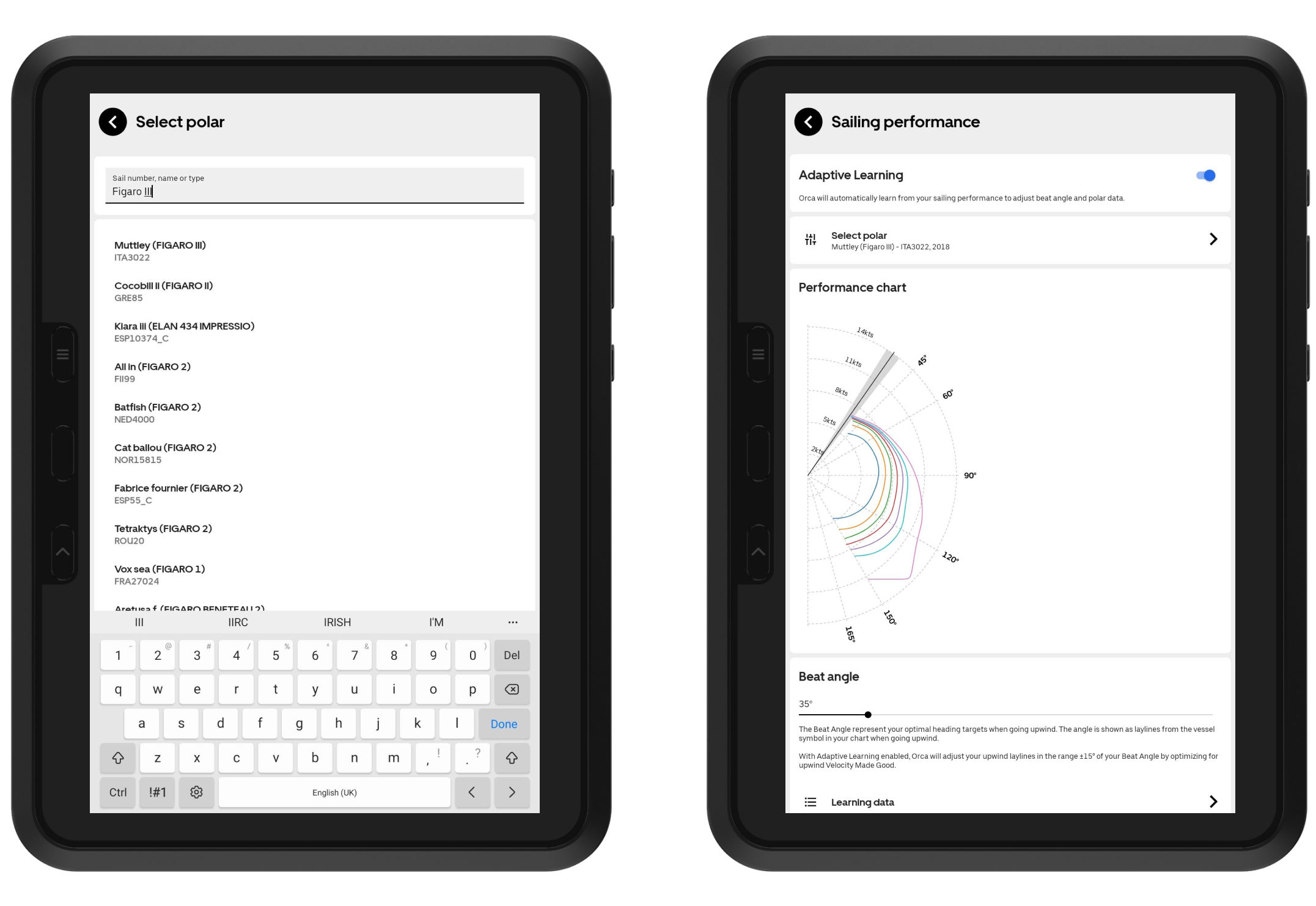
Search for your boat type, or even sail number if your vessel is in the ORC database to set up your polar diagram.
Your Polar Diagram will be used for Sail Routing, Target Boat Speed, and Polar Performance instruments, and also affect the following calculations of the Orca Sailing Processor:
Mast Height is used for estimating wave-induced mast motion
Keel depth, total weight, and waterline length are used to estimate your leeway coefficient
Motion Processor and Compass calibration
The Orca Core contains a rate-of-turn 9-axis motion processor and a precision compass. Both of these sensors need calibration after you install your Core. Calibration takes 2-3 minutes and involves turning your boat slowly through a circle. You can do this calibration via Settings > Orca Core > Calibrate Compass.
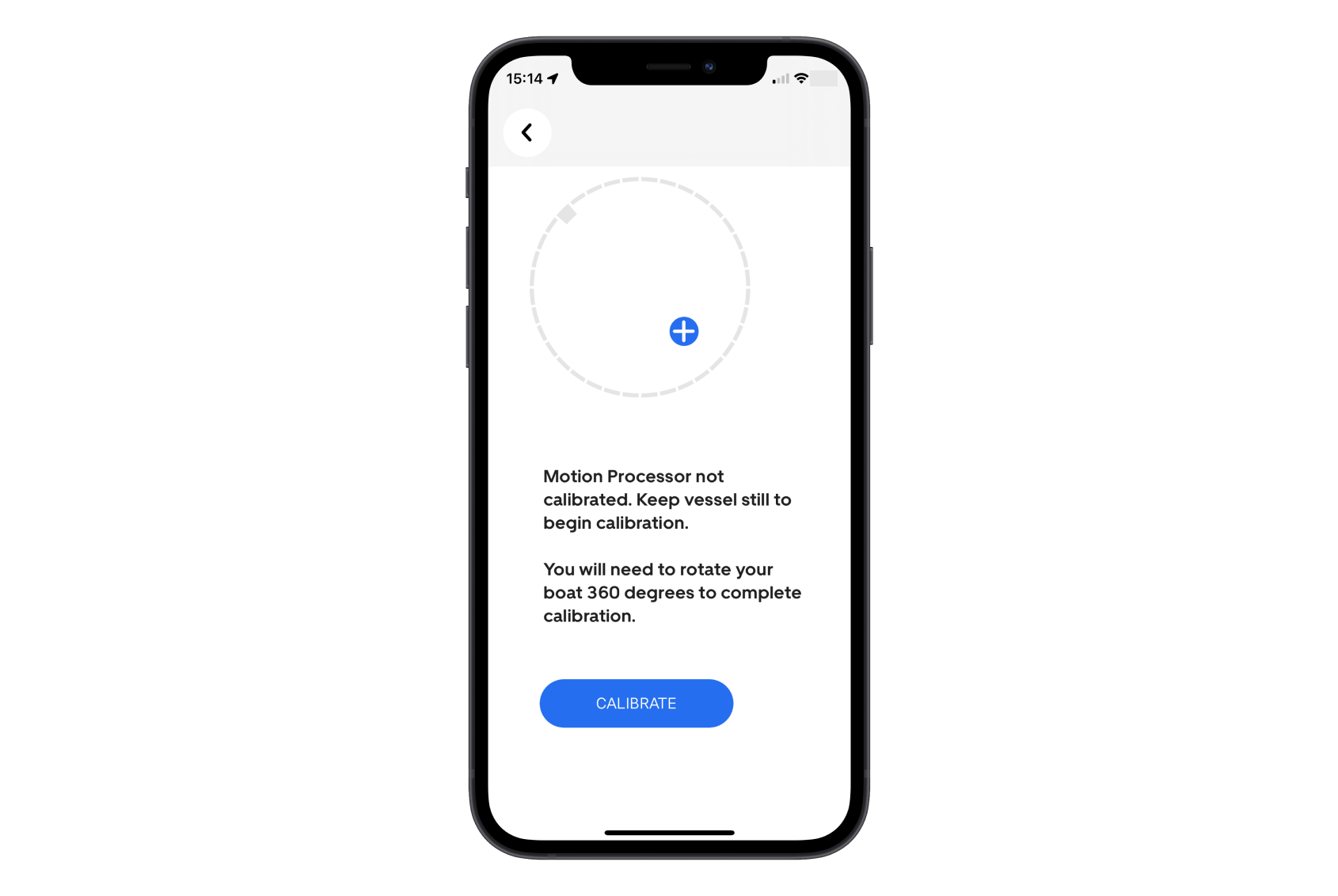
For accurate wind data, calibrate your compass and motion processor after installing your Orca Core.
Calibration of these sensors will affect the following calculations of the Orca Sailing Processor:
Heel compensation of wind speed and angle, leeway, and wave-induced mast motion derived by the motion processor
True Wind Direction is directly derived from the compass
True Wind Direction calibration
True Wind Direction Tacking can be calibrated via Settings > Vessel > Calibrate TWD. Orca guides you through the calibration, which involves sailing upwind on starboard and port tack to measure the effect of True Wind Direction Tacking on your boat. A TWD calibration run takes typically 5 minutes and should be done in an area with as small waves and currents as possible.
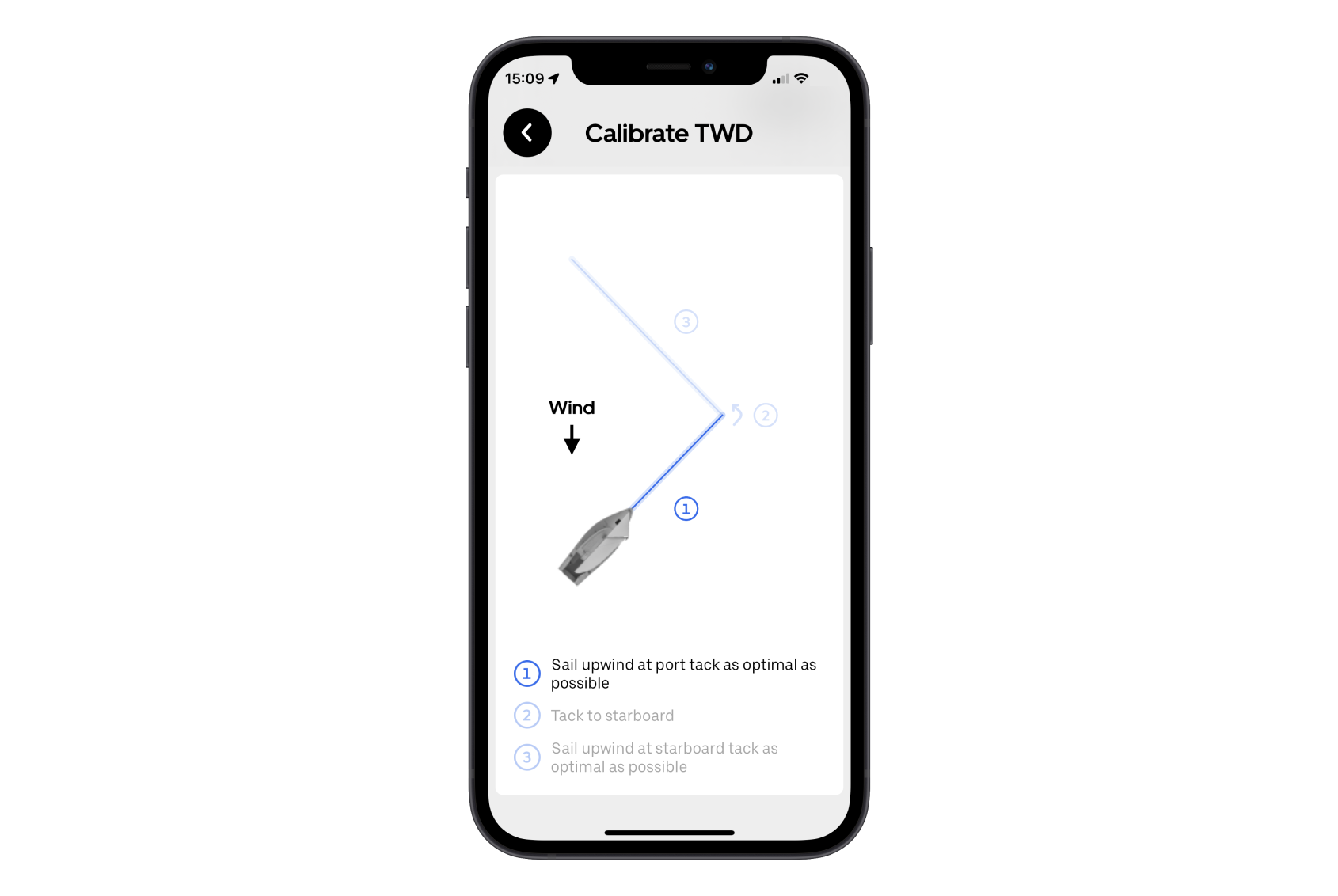
Orca guides you through the True Wind Calibration for a quick and easy setup. For best results, you should run the calibration at different wind speeds.
Because True Wind Tacking is dependent on wind speed, you should repeat the calibration process at different wind speeds. Orca stores calibration offsets for 3, 5, 8, and 10m/s, so you should at least do one calibration run at around 3 and 8m/s.
For those who are racing: It’s highly recommended to repeat this calibration prior to every race start if the wind is less than 4m/s. This is because True Wind Direction Tacking is also affected by the Wind Gradient, which can vary significantly.
Take sailing to the next level
With the Orca Sailing Processor, you’ll get reliable and accurate True Wind across both tacks, when you are going upwind, downwind, and reaching. The Sailing Processor is also fine-tuned for the built-in motion processor and precision compass in the Core, which in turn makes it incredibly easy to set up with accurate results.
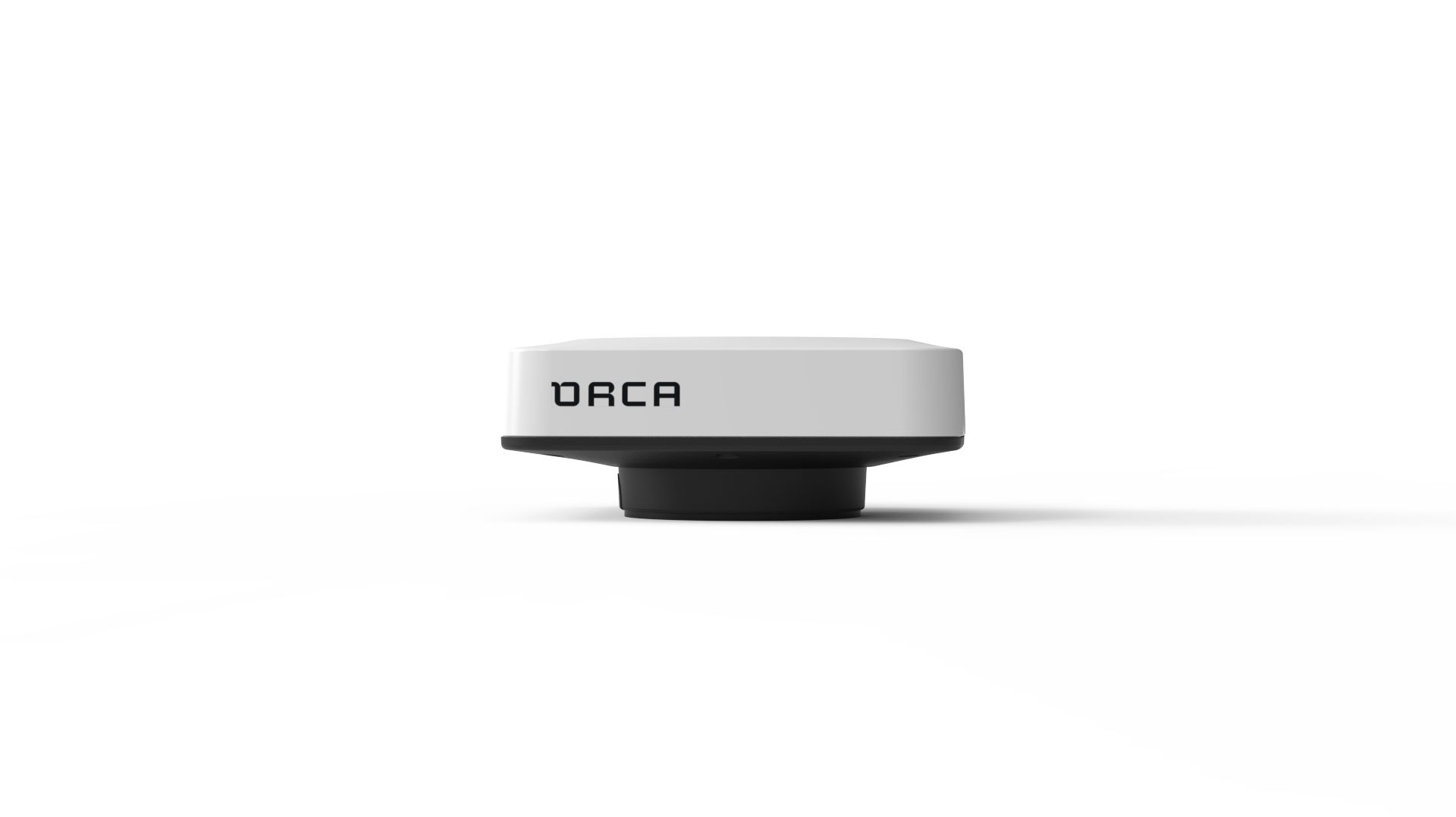
The Orca Core's built-in sensors and powerful processor make it an incredibly powerful Sailing Processor.
If you are looking to get an edge in racing, or just want more accurate wind information to sail better, you should get an Orca Core. It powers the Sailing Processor in Orca and delivers many other great experiences, such as wireless autopilot control.
The Orca Display 2 makes for a great primary navigation device and a fantastic instrument panel that helps you keep track of your sailing performance. It lets you quickly switch between a casual cruising layout and a performance-oriented instrument experience so you can take your sailing to the next level.

